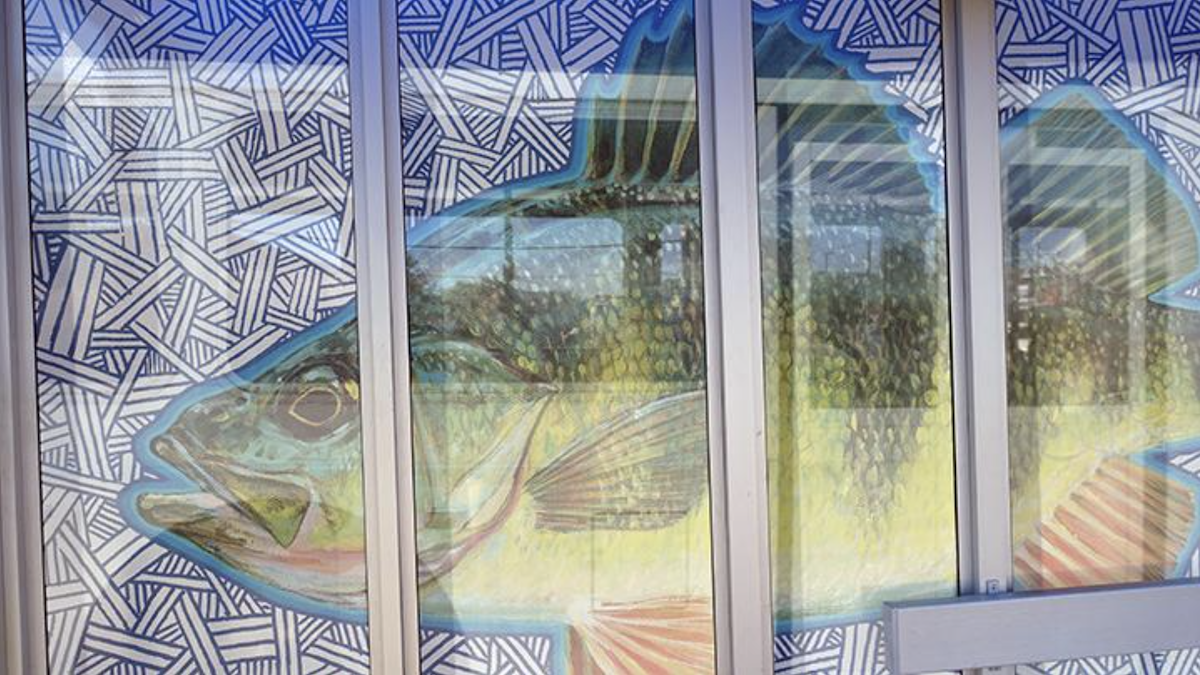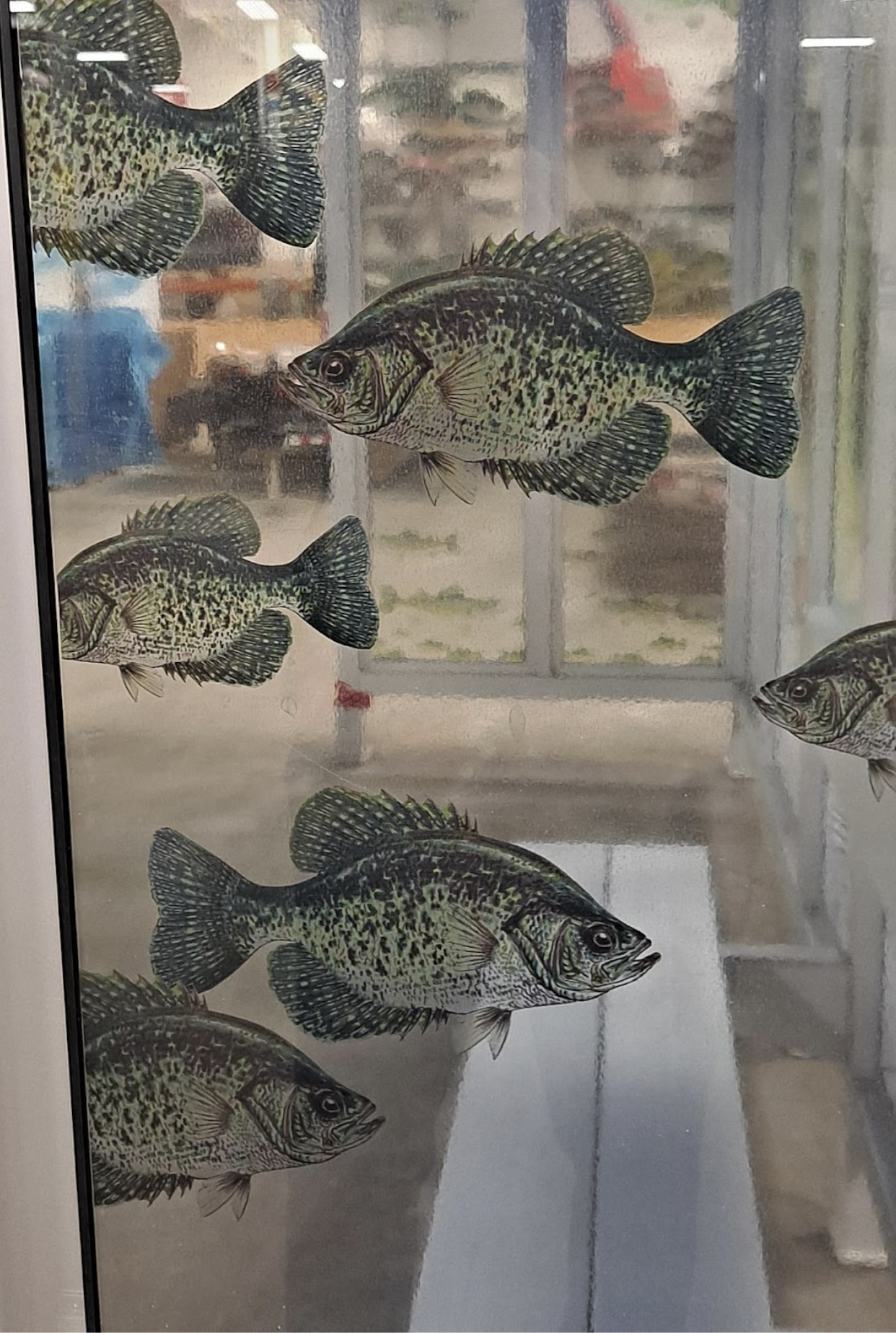Art Examples and Requirements
In order for art clings to function well on Metro Transit shelters, they cannot interfere with the use of the shelter. This means that the art clings must be at least 50% transparent so customers, drivers, and police officers can see into and out of the shelter. This is achieved in two ways, depending on the material being used to make the cling.
Material 1: Perforated Material
The first option is to use a cling material that is perforated. This means that the whole fabric is evenly perforated with little holes so that the material appears transparent while the image printed on it is complete and can span edge to edge.

Perch art by Ted C. Hanson using Perforated Material
The advantage of this material is that the design can be completely printed across the surface. There is no need to design for spaces to see through the design and into the shelter. The disadvantage is that the image itself is not as strong as the Opaque Material (see below) and is printed on only one side.
Material 2: Opaque Material
Opaque material is printed on both sides and is not transparent where there is an image.

Fish by Ted C. Hanson using Opaque Material
The advantage of this material is that it is printed on both sides and the image is opaque and easy to see from both sides. The disadvantage is that the image has to be designed to allow at least 50% transparency, so it is possible to see into and out of the shelter. This means that the print-ready files must have transparent areas designed into the art (between the fish images in the sample above) to allow for people to see through the clear material.
Art Requirements
Material
When submitting your artwork, you will need to identify which type of cling material you have designed for: Perforated Material or Opaque Material. If you are designing for Opaque Material, you will be asked to provide vector files with cut lines for printing. If you do not know how to do this, please design for the perforated material.
Templates
All artwork must be submitted using this template.
Artwork not submitted using this template will not be considered for installation.
Art Images
Artists submitting art must have all rights to the images they are submitting. All images must be unique to the artist, but when submitting a Bus Shelter Beautification project, artist may repurpose previous art they have created to fit the template. Final art to be submitted to printer must be print-ready to-size PDF images at 150 dpi.
If there are any questions about Art Requirements, please contact the Public Art Administrator at [email protected]. There is limited ability to help with software issues.